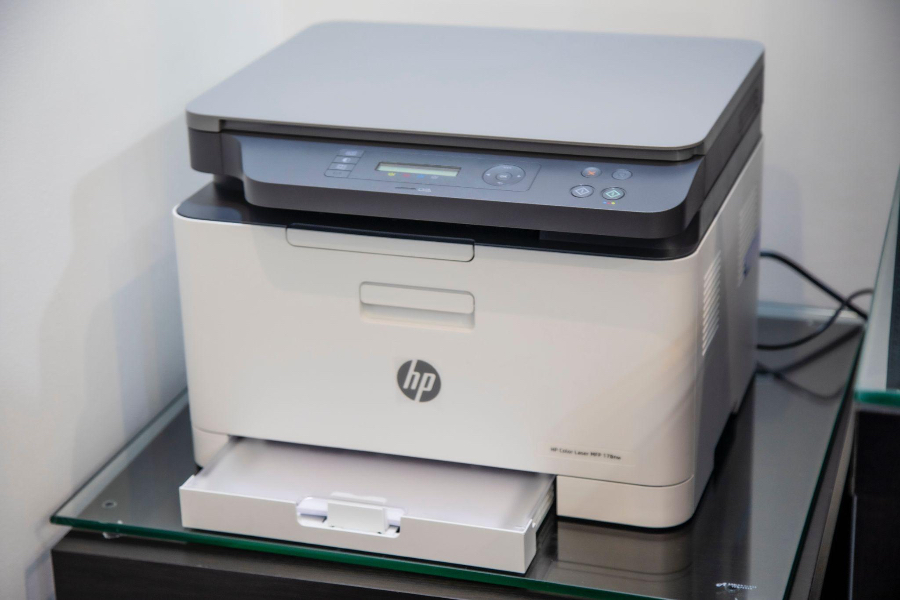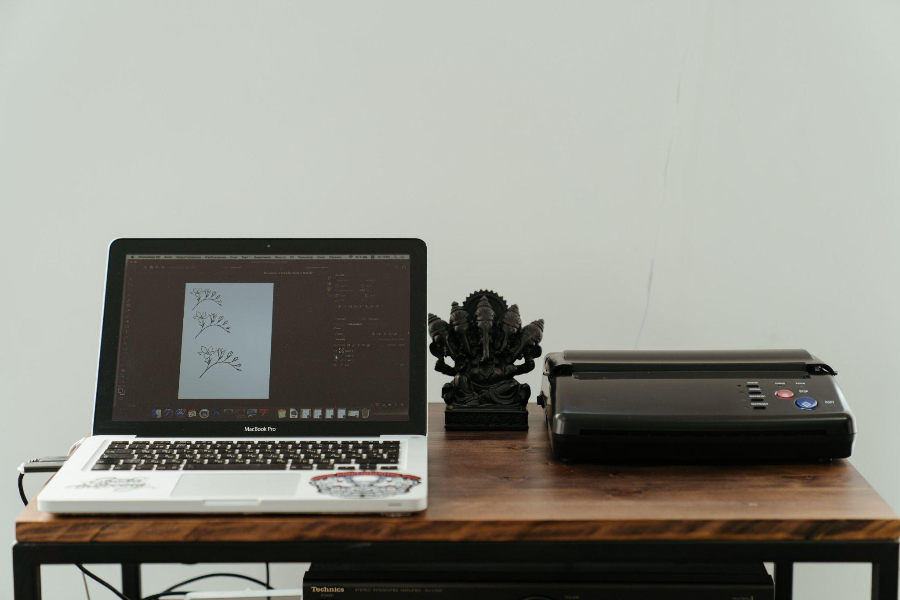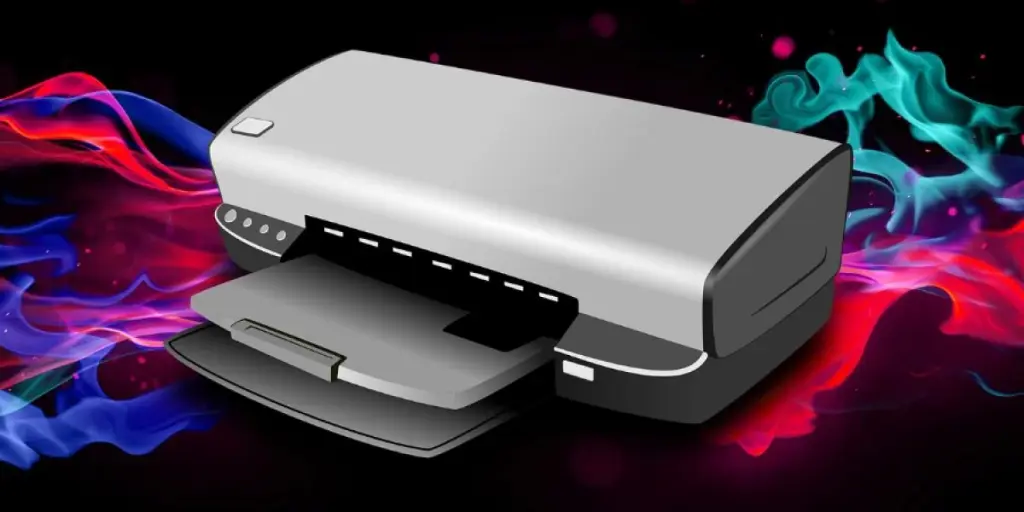A quality printer is expected to come with good connectivity, high-quality printing capability, and a fast operating speed. An inkjet printer is inexpensive, smaller in size, and can print high-quality photos and documents. As a seller, knowing which printers to stock can help you stand out in the market and increase your sales. This guide will offer an overview of the types of inkjet printers available in the market so that you can confidently choose the right printers for your inventory.
Table of Contents
Why are inkjet printers in high demand?
Types of inkjet printers
Benefits of inkjet printers
Factors to be considered while buying an inkjet printer
The target market for inkjet printers
Conclusion
Why are inkjet printers in high demand?

Thanks to the multi-functionality and high-speed printing of inkjet printers, they are in high demand, with a market size of around US $52.1 Billion in 2022. Inkjet printers are in massive demand by the domestic sector, like schools, colleges, universities, and business organizations, for printing high-quality pictures and documents. According to IDC’s tracking report of China’s peripheral printing market, China has shipped 1.596 million inkjet printers.
At the same time, industrial inkjet printers are popular among large businesses to print, mark, code, and label articles for logistics and packaging. An inkjet printer is affordable, prints high-quality images, is smaller in size, and works fast.
North America dominated the Inkjet printers market in 2020 by achieving a market share of US $11,014.3 by 2027. The Canadian market expects to attain a 3%, while Mexico a 5.8% compound annual growth rate (CAGR) from 2021-2027.
Compared to its counterparts, such as laser printers, it has a much lower investment cost and boasts more functionality. Inkjet printers are also demanded on a large scale, thanks to digital printing for panaflex printing and advertisement posters.
A dramatic surge in demand for inkjet printers has been observed due to the pandemic, where people worked from home, and through e-learning, students attended classes at home. Another factor that has increased the demand for inkjet printers is e-commerce. Since people have started online shopping and food deliveries at home, using convenience-based packaging, various industries are biding the market size of the printing industry.
Types of inkjet printers:
There are mainly three types of inkjet printers available on the market:
Single-function inkjet printers: These are best for personal use and simple printing jobs like printing large documents more efficiently. They are easy to operate, inexpensive, and can do multiple prints in either black and white or color. However, they have very high maintenance costs and can only be used solely for printing; hence they are not multifunctional. Their price ranges from US $150 to US $5000.
Multifunctional inkjet printers: These are also called all-in-one printers, as they can print at home and in the office. They can print in black and white, but replacing their cartridge every year is essential. They’re capable of copying, scanning, and printing. They’re also referred to as photocopiers, Xerox machines, copiers, etc. They are cost-efficient in terms of price, energy, and workspace. On the other hand, the power required to run them and their maintenance costs make them costly overall. Their price ranges from US $2700 to US $5200.
Photo inkjet printers: These printers are used for stand-out printing and colored pictures of various sizes. These are comparatively more expensive than their peer printers due to dyed and pigmented ink. They use six to 12 inks per cartridge for printing. They’re the best option to be considered for printing photographs and can do multiple jobs like printing, copying, and scanning. Despite that, they can be quite expensive for certain printing jobs and print much slower than laser printers. Their price ranges from US $2000 to US $2100.
Benefits of inkjet printers:
There are multiple advantages to buying an inkjet printer, and some of the key ones are listed here:
Affordable: Inkjet printers are affordable, with the average price of an inkjet printer being around £30, and even an inkjet printer with varied benefits could cost around 200£.
Easy to use: Unlike their counterparts, inkjet printers are straightforward to operate. Just take it out of the box, attach the cord, load the cartridge and turn it on for high-quality photo printing.
You don’t need a warm-up: Inkjet printers do not require a heating time. Depending on the type of printer, it will just take 5-10 seconds to print a picture. Inkjet printers are capable of printing without getting heated up.
High-quality images: Inkjet printers are best used for printing high-quality images with depth. Laser printers can also print high-quality images but still lack precision, transparency, and depth, especially when compared to an inkjet printer.
Print on any paper: Inkjet printers can print on any material, like paper, corrugated boxes, commercial paper stocks, label stocks, etc. Its usage in label converting, merchant printing, and non-rigid material packaging increases its versatility among brand owners.
Factors to be considered while buying an inkjet printer:
When selecting the right model of inkjet printer, the following are some key factors to keep in mind:
Footprint size: The footprint is the space required by a printer on a desktop or table. Before buying an inkjet printer, it’s advisable to look out for the uses of this machine. How many people will use it, how much printing is required, etc.?
Printing speed: Before buying an inkjet printer, it’s essential to look for the pages per minute (PPM), characters per minute (CPM), and images per minute (IPM), as the speed varies for characters, pages, and images. As a comparison, a laser printer can print black and white text per minute at 9 to 25 pages, while an inkjet printer prints images at the rate of 1-4 minutes per image.
Printing quality: Inkjet printers are best for printing documents, graphics and images. Compared to laser printers, their speed is relatively low. However, no one can think of surpassing an inkjet in high-quality printing images while laser prints better black and white texts or documents.
Memory/RAM: Memory is related to the printing quality of a printer. High memory increases the speed and printing quality of a printer. One needs a high memory or RAM printer to print multiple images with high speed and high quality.
Connectivity: Before buying an inkjet printer, it’s better to look for wireless/ Bluetooth/ NFC or Wi-fi connectivity. It’s essential to check that the printer to be considered for buying is connectable to devices like a cellphone, laptops, etc.
Duplex: A duplex is a printer’s ability to automatically print on both sides of the paper. Of course, it can be performed manually, too, but that would be a real hassle, especially for a high quantity of printing.
Security: Another crucial factor to look for while buying an inkjet printer is reliability—the ability to secure a company’s confidential data from cyber-attacks and data breaches.
Color: For high-quality colored printing images, an inkjet would be an ideal choice. While for simple black-and-white texts or documents with high-speed printing, a laser would be an excellent choice.
Output trays and input feeders: How much paper can a printer hold in an output tray? For personal use, 100-150 sheets of paper would be enough, while a printer with a minimum of 250 sheets for office jobs would be ideal. For printing thicker media like envelopes, some special printers have a slot or a multipurpose tray for printing.
The target market for inkjet printers

Due to digital advancements in advertising, panaflex printing, billboards, signage boards, etc., is a must and thus requires high-quality images, positively affecting the demand for inkjet printers. Now printers are easily connected through Bluetooth, wireless, or USB. and don’t need the typical wires for operation; these advancements in printing technology will boost the market share of printing.
Due to inexpensive labor and low production costs, Asia pacific has become home to the largest network of the ink industry. Many local companies are also ink producers, like Toyo ink, Sakata INX, etc. Various European multinational companies heavily depend on China due to its innovative printing chemicals, such as ink constituents and solvents. Due to the boom in pharmaceutical industries, North America is the most significant contributor to the production of inkjet printers, with more than a 30.1% share of revenues in 2020.
Conclusion

In this guide, we discussed the basic technology of inkjet printers, their types, and benefits and offered a buying guide. Inkjet printers are inexpensive, easy to operate, and print high-quality images. Every printer accommodates different needs, so after considering your customer’s needs, you can guide them to find the best printers available on the market today.




